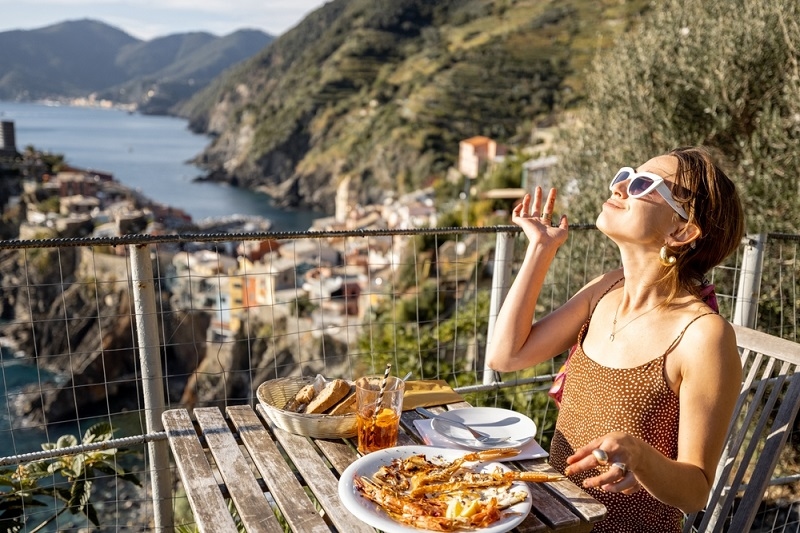
Many people think Italy is just pizza and pasta, but a fantastic world comes before that. There is the journey of discovering Italy through regional cuisine—a foodie's dream—and it's not just culinary but a cultural dive. Food in Italy is regional, for obvious reasons; the food is often determined by geography, tradition, and passion. From the dairy-based dishes in the Alps to sun-ripened citrus and seafood in the South, regional cuisines reflect age-old traditions that are still evident today.
This guide is intended to be an Italian regional food compendium, so you should find regional specifics, authentic Italian dining instructions, perspectives on northern English and southern food, and suggestions on pasta traditions from Italy. So, whether you're saving up for your next eating tour or simply trying to decipher Italy's beautiful, elaborate gastronomic map, let's help you get started on that dream foodie trip—one bite at a time!
Italy may be one country, but its food isn't uniform. The Italian Peninsula is split into 20 regions of food, each distinct in ingredients, techniques, and food philosophies. This difference comes from geography; robust fare will predominate in mountainous regions, coastal regions will embrace seafood, and agricultural areas, with plenty of olive oil, wheat, and vegetables, may lean on those as their foundation.
The world has seen a globalization of Italian food, but authentic Italian food is local to a place. What may be popular in one town may be completely unknown in the next. Food in Italy is food, identity, heritage, and pride on a plate.
You will find rich, creamy dishes in Northern Italy with plenty of butter and meat. While pasta is prominent, other dishes such as risotto and polenta are more common.
Lombardy, home of Milan, may be best known for its Risotto alla Milanese, creamy rice with saffron. It also has osso buco (braised veal shank) and a rich cheesemaking tradition, including Taleggio and Gorgonzola.
The cuisine of Piedmont is rich and sophisticated, featuring white truffles, Barolo wine, agnolotti (stuffed pasta), butter sauces, wild game, and hazelnuts.
This region is known as the food capital of Italy, being home to Parmigiano Reggiano, Prosciutto di Parma, Mortadella, and Balsamic Vinegar of Modena. The legendary pasta here is tagliatelle al ragù (though it is most often inaccurately referred to as spaghetti Bolognese).
Moving south, the central regions blend coastal freshness with inland rusticity. Here, olive oil replaces butter, and the focus is on seasonal simplicity.
Tuscan cuisine is straightforward and earthy. Dishes like ribollita (vegetable-bread soup), pappa al pomodoro (bread and tomato stew), and bistecca alla Fiorentina (Florentine steak) highlight a farm-to-table ethos. Beans, herbs, and Chianti wine are key ingredients.
Often overshadowed by Tuscany, Umbria is a gem for food lovers. Known for black truffles, wild boar ragù, and lentils from Castelluccio, Umbrian dishes are deeply satisfying.
In Lazio, particularly Rome, you’ll find famous pasta dishes like Carbonara, Cacio e Pepe, and Amatriciana. Each uses a few ingredients but demands precise technique. Artichokes and salted cod (baccalà) are also central to Roman menus.

The south explodes with vibrant flavors, sun-ripened produce, and a love for olive oil, chili peppers, tomatoes, and fresh seafood. The food is often more straightforward but bold.
Home to Naples, Campania is known worldwide for its Neapolitan pizza, but don’t stop there. Try spaghetti alle vongole (clam pasta), mozzarella di bufala, and sfogliatella, a flaky ricotta-filled pastry.
Calabria’s cuisine is fiery and rustic. It features Nduja (a spicy, spreadable sausage), chili peppers, and preserved vegetables. Seafood is plentiful, as are earthy dishes like pasta with sardines and wild fennel.
Sicilian food blends Greek, Arab, and Spanish influences. Enjoy arancini (fried rice balls), caponata (eggplant relish), cassata cake, and granita. Seafood, citrus, pistachios, and ricotta dominate this island’s palate.
Famed for orecchiette pasta, burrata cheese, and olive oil, Puglia offers unforgettable yet straightforward dishes. Try fava bean purée, grilled octopus, and taralli crackers.
Pasta is sacred in Italy—but it's never one-size-fits-all. Each region has its shapes, sauces, and serving styles. Understanding pasta traditions in Italy helps you appreciate its diversity:
Never expect parmesan on seafood pasta in the South—it’s a cultural faux pas. And al dente? Always.
While every region has its charm, there’s a clear contrast when comparing northern vs. southern Italian food:
| Feature | Northern Italy | Southern Italy |
| Fats Used | Butter, cream | Olive oil |
| Pasta Types | Fresh, egg-based | Dried, semolina-based |
| Main Proteins | Meat (veal, pork), dairy | Seafood, cured meats |
| Flavor Profile | Mild, rich, delicate | Bold, spicy, acidic |
| Common Dishes | Risotto, polenta, meat stews | Tomato sauces, grilled seafood |
| Popular Cheeses | Gorgonzola, Taleggio, Fontina | Mozzarella, Ricotta, Pecorino |
Understanding these distinctions enriches your food experience and helps you order more like a local.
Want to eat like a true Italian? These authentic Italian dining tips will elevate your experience:
If you’re serious about understanding Italy’s food scene, food tours in Italy offer unbeatable immersion. Here’s what you gain:
Whether you book a truffle hunt in Piedmont, a cooking class in Bologna, or a seafood market tour in Sicily, a good guide brings the culinary landscape to life.
Would you be ready to plan your trip? Here’s how to turn your vacation into a culinary pilgrimage:
This isn’t just a vacation—it’s a journey through taste, tradition, and time.
Discovering Italy through its regional cuisine—a foodie’s dream—is more than a luxury; it is a window into the country’s soul. Every dish tells a story, from the creamy risottos of the north to the sun-soaked seafood of the south. Every morsel connects you to a region’s experience—a fusion of geography, history, and passion.
So, whether you are dreaming of your future itinerary or want to explore Italy's unique culinary landscape, remember: the only way to know Italy is to taste it, region by region, meal by meal. Food here is not just food—it is culture, love, and sometimes even a personalized work of art on a plate.
This content was created by AI